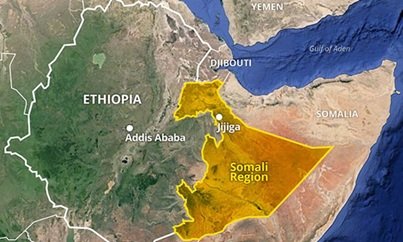By Ismail Aliyu
Minnesota Institute of Horn of Africa Studies (MNIHAS)
Abstract:
This independent investigation surfaces damning evidences of state-sanctioned slaughter, horrific sexual savagery and a calculated architecture of institutional cruelty taking place inside Jigjiga’s Havana Prison. Focusing on the a gruesome and deeply suspicious killing of Shafici Abdulkarim (age 16 at risk) the 15 page detailed report outlines some of these stories of suffered but silent young men whose untimely death has gone unaccounted for. And others who pass similar brutal fate in this prison. For three weeks, I carried out primary and secondary research by interviewing the families, sources from the prison, who spoke only under the condition of anonymity and crosschecking public records that are scattered.
The findings indicate that the Havana Prison is being weaponized as a slaughterhouse for the innocent behind an official curtain. The report calls for urgent action by the Federal Government of Ethiopia, international human rights organizations, and activist groups. Its very essence is to uncover the truth, to do justice to victims and to require the perpetrators and implementers of such crimes to answer for their acts. It also seeks to create the conditions for addressing future mass atrocities through legal reform, institutional accountability, and principled leadership after the downfall of the Regimes.
Prologue – The March to Silence
Once I looked inside the depressing secrets of the Havana Prison, I knew I was in for trouble. I never had editor’s orders to do this. No one sent me. I didn’t send it to anyone, not really (too much weight to carry in silence). As a researcher and teacher, I’d read about the topic of justice and the importance of ethical considerations, but never had I felt the moral force that comes with responsibility as I did in the quiet of early May 2025. I could no longer look away. Something within me, something threw me off balance and screamed: “If not you, then who?”
So on the morning of May 3, I walked into the office of my department head, a storm inside masked. I explained that I wasn’t feeling well and that I needed to take a medical break, which would last one month away from work. “Two weeks,” he said, looking concerned and at me. I insisted. He extended it to three weeks. Fortunately, my teaching schedule was over, and there was no existing program that would detain me. That’s how my silent mission began, not as some kind of formal assignment but as a moral imperative.
That night I came home, not with bags of clothes but with my notebook and pen. They were my tools. I sensed from the start that this was not going to be an ordinary research assignment. For the three weeks that followed, I woke before dawn and went to the scene, mingling in the throng as a curious bystander or a grieving relative. I even pretended to be a prisoner’s family member to enter Havana Prison. At other times, I waited outside courthouses, sat silently in police stations or trailed family members of the deceased to their homes. At the beginning, they were skeptical, and that’s only natural. Trust is a brittle commodity in a corner of the world where speaking the truth can get you killed.
But gradually they also saw me for what I was — not a spy, not a politician — but someone who desperately wanted to know. And finally, the stories started to come out, one after another. Rumors whispered about sons who never came back. Poisoned or tortured young men. Youngs raped behind prison bars. And always, the all too familiar silence: families too fearful to ask questions, too timid to demand answers.
I listened. I wrote. I verified where I could. I cross-referenced dates, causes of death and names. I would do so with friends of victims, or former detainees, or occasionally with sympathetic officials, always discreetly, always respectfully. It was the only way to test the truthfulness of the information, without endangered them.
In those shaded corners of Jigjiga, between cold prison walls and mourning home, I found out I was wrong. It is in Havana Prison that is prison within a prison. To many, it has become a mass grave of morality and judicial order.
And it is these pages that are at the end of that trek. They are not mere findings, but pieces of voices silenced and truths buried. this is not merely a report—it is a desperate scream carved into paper. It is a call for reckoning.
Read more: Where Justice Died: The Lurid Slaughter and Rape in a Havana Jail
Minnesota Institute of Horn of Africa Studies (MNIHAS)


Leave a Reply